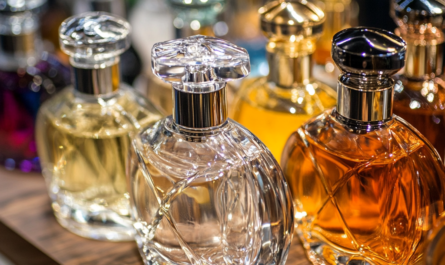The perfume market is highly competitive, where every message addressed to the client must not only be attractive, but also timely. Traditional approaches to promotion become insufficiently effective when the client expects an individual approach, relevant offers and convenient interaction with the brand. Automating alert cycles allows you to solve these problems quickly and without significant resource expenditure.
Benefits of Automated Alert Cycles for Brands
Automated alert cycles provide companies with the opportunity to create consistent, high-quality interactions with customers. They help simplify the communication process and significantly increase the effectiveness of marketing campaigns. For example, pre-planned and customized notifications free up time for more strategic tasks.
With smart automated messaging, brands can build long-term relationships with customers, keeping them interested and driving purchases. It is important to note that such a strategy allows not only to optimize marketing processes, but also to significantly increase their efficiency. Alert loops are becoming a key tool in helping brands differentiate themselves from competitors by delivering a personalized and unique experience for each customer.
The main advantage of such cycles is their ability to maintain customer interest over a long period of time. Using automation, brands can deliver relevant messages to customers at every stage of the interaction, from first contact to repeat purchases. This not only increases loyalty, but also stimulates an increase in the average check.
Create segmented lists for targeted interactions
For automatic alert cycles to work effectively, you need to properly segment your customer base. Here are the key steps to create segmented lists:
- Analysis of client data. Collect information about preferences, frequency of purchases and other important characteristics.
- Definition of segments. Divide your base into groups: new customers, regular customers, promotion participants, etc.
- Setting up personalized messages. Each group should receive unique suggestions and recommendations.
- Regular update of lists. Customer data must be up-to-date to keep messages highly relevant.
- Using analytics. Track campaign results to optimize and adjust segments.
This structure allows you to send only those messages that are truly interesting to the client, improving their perception and increasing conversion.
Integrating visual content to enhance messaging
Perfumery is a product that is associated with emotions, aesthetics and sensory experience. Visual content plays a key role in communicating these values. For example, photographs of bottles, inspirational images and short videos help evoke an emotional response in the customer.
It is important to remember that the quality of visual content directly affects brand perception. Using professional graphics that highlight the uniqueness of the product helps create a positive impression and increase trust. At the same time, it is worth considering the harmonious combination of text and images: visual content should complement the message, and not distract from it.
Strategies for a personalized approach in perfume promotion
Personalization is the key to successfully promoting perfume lines. It allows you to make each message more meaningful for the client, emphasizing its uniqueness. For example, personalized recommendations based on past purchases or including the customer’s name in the body of an email makes interactions with a brand more personal.
Personalized strategies help brands stand out from competitors by offering customers solutions that match their preferences. At the same time, it is important to take into account customer feedback in order to adjust and improve the approach. This method allows not only to increase sales, but also to strengthen long-term relationships with the audience.
Mistakes to Avoid When Creating Alert Loops
Despite the obvious benefits, automation can become ineffective if certain mistakes are made. For example, excessive frequency of alerts or lack of personalization can irritate the customer.
Another common mistake is lack of analysis of the results. Automation cannot be “set and forget.” Regular monitoring, adjusting strategies and testing new approaches helps keep campaigns relevant and effective.
Alert cycles offer incredible opportunities for fragrance brands to build a successful promotion strategy. Through automation, they save time, reduce costs and increase customer engagement. The right approach to creating alert cycles includes base segmentation, the use of quality visual content, and a personalized approach to each customer.
However, automation is not only about simplicity and convenience, but also about constant improvement. It is important to closely monitor how customers respond to messages, which strategies work best, and which ones require improvement. This process allows brands to be flexible, adapt to market changes and provide a high level of interaction with their audience.
Successful use of alert cycles helps brands not only increase sales, but also build a positive image, building trust and loyalty. Customers who receive timely, relevant and aesthetically pleasing messages are more likely to become repeat customers. Automation in marketing is not just a trend, but a necessity for those who strive to maintain a leadership position in the market.
The frequency depends on the type of campaign and audience. It is recommended to start with a minimum number of alerts (for example, 1-2 times a week) and increase the frequency based on customer engagement analysis.
High-quality photographs of bottles, images that convey the atmosphere of the fragrance, and short videos describing the notes of the perfume are the best options for attracting the attention of customers.




